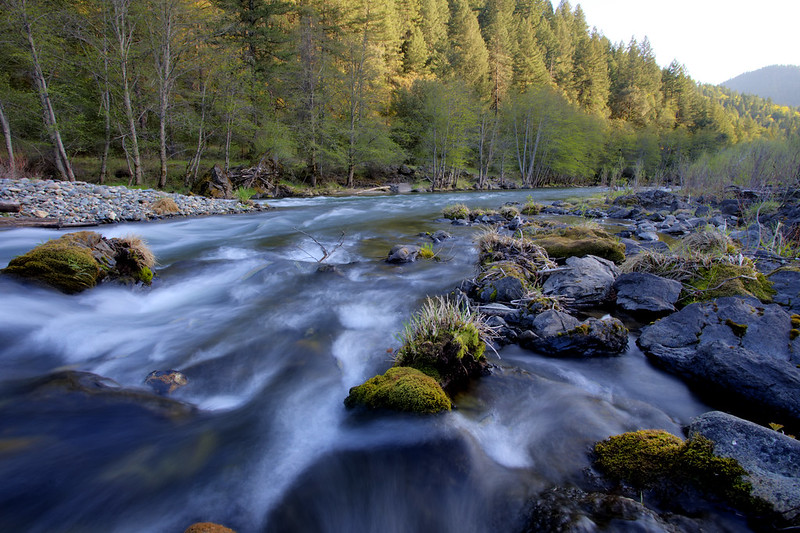
Photo: Bob Wick, BLM
California has committed to conserving 30 percent of its lands and waters by 2030, with a concurrent effort taking place on the national level and by the United Nations to protect 30 percent of the planet to help combat the climate and extinction crises.
In California, however, too much of this effort has focused on conserving the state’s land or ocean – without mention of the freshwater rivers that connect our ecosystems, support our lands, and flow to the ocean.
To-date, 95% of all assessed rivers and streams in California are degraded from ongoing pollution, increasing development pressures, and over-diversion that leaves rivers with no or too little water. This degradation can be felt downstream, impacting estuaries, wildlife, and entire ecosystems. Recent studies have also found that water quality for key habitat is needed to protect native salmon and steelhead trout from the impacts of climate change.
California simply can’t conserve its lands and ocean without protecting freshwater.
There are tools California can – and should – use to protect and restore its freshwaters and support healthy watersheds to achieve its overall 30×30 conservation goals. California should specifically leverage an existing provision of our nation’s foundational water law, the federal Clean Water Act, which allows states to designate a waterway as an “outstanding natural resource water.” Once designated, an outstanding water receives the highest level of legal protection afforded by law – yet is an underutilized conservation tool with California only having two waterbodies with these protections: Lake Tahoe and Mono Lake.
By mirroring the efforts undertaken by other western states, such as Oregon and New Mexico, California can rapidly increase the designation of these outstanding waters and protect the water quality that people and ecosystems rely on.
California needs a statewide designation process for outstanding waters and to identify priority waters for designation – in order to protect the lands and ocean California strives to protect by 2030. Outstanding water designations can play an important role in protecting California’s culturally and ecologically significant watersheds, estuaries, and lands – and should start by designating:
- Rivers or streams within State and National Parks.
- California and National Wild and Scenic Rivers.
- Rivers or streams within State and National Wildlife Refuges.
- Rivers or streams within federally designated wilderness.
- Rivers or streams designated as supporting tribal beneficial uses, or upstream from a waterway that supports tribal beneficial uses or other tribal value as communicated by California tribes.
Even if a relatively small percentage of California’s receive this designation, the protections afforded for these rivers will ripple beyond the immediate river miles that are protected, with benefits extending downstream, throughout the state, and to the ocean by protecting habitat that flows from our summits to the sea.
Stay informed of California Coastkeeper Alliance’s work to protect our watersheds – now and for generations to come – by subscribing to our newsletter, becoming a lifetime member, or following us on social media: @CA_Waterkeepers.

Policy Manager Kaitlyn Kalua represents CCKA and its member Waterkeepers in state regulatory and legislative forums to advance statewide water policy.



